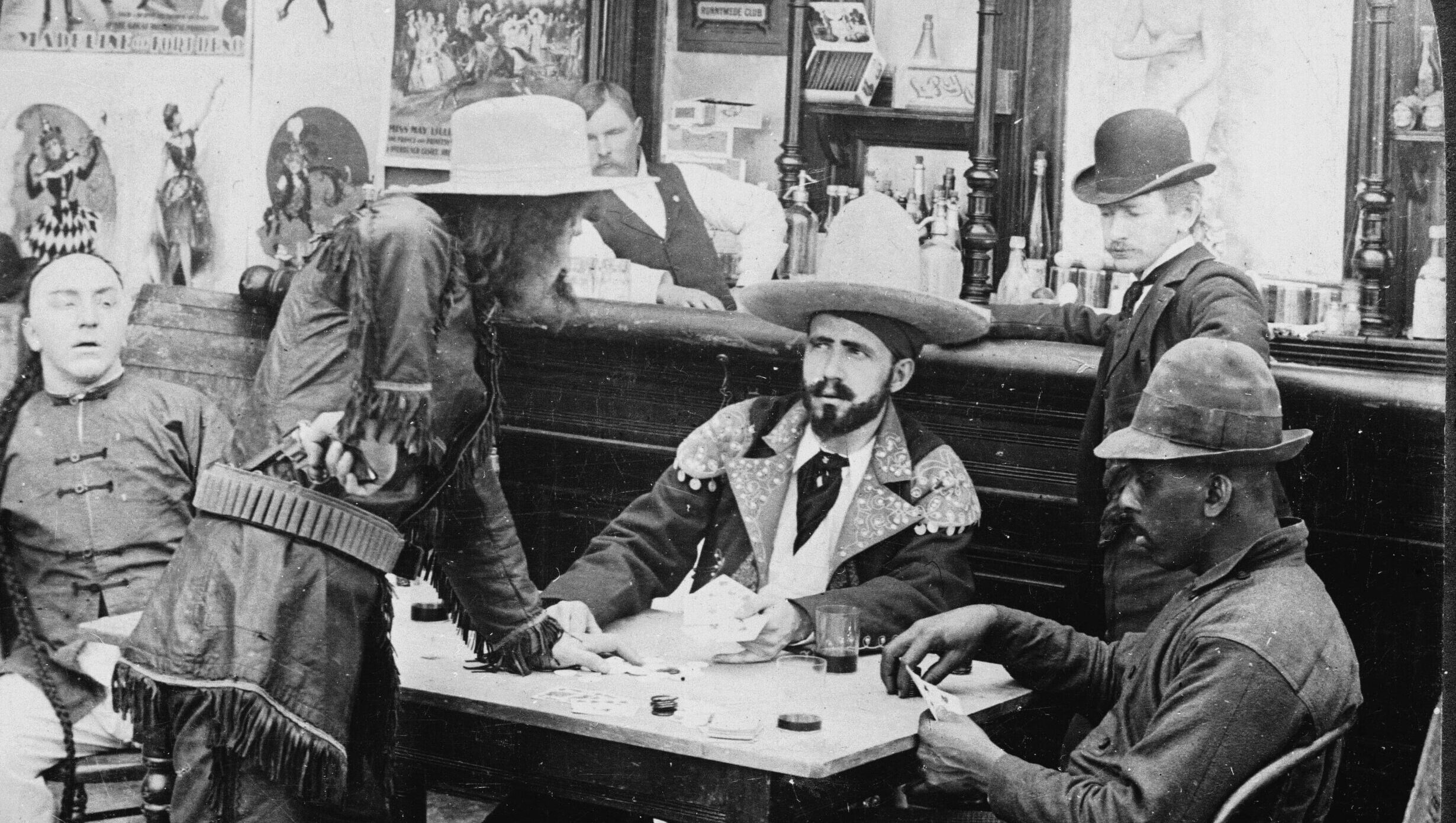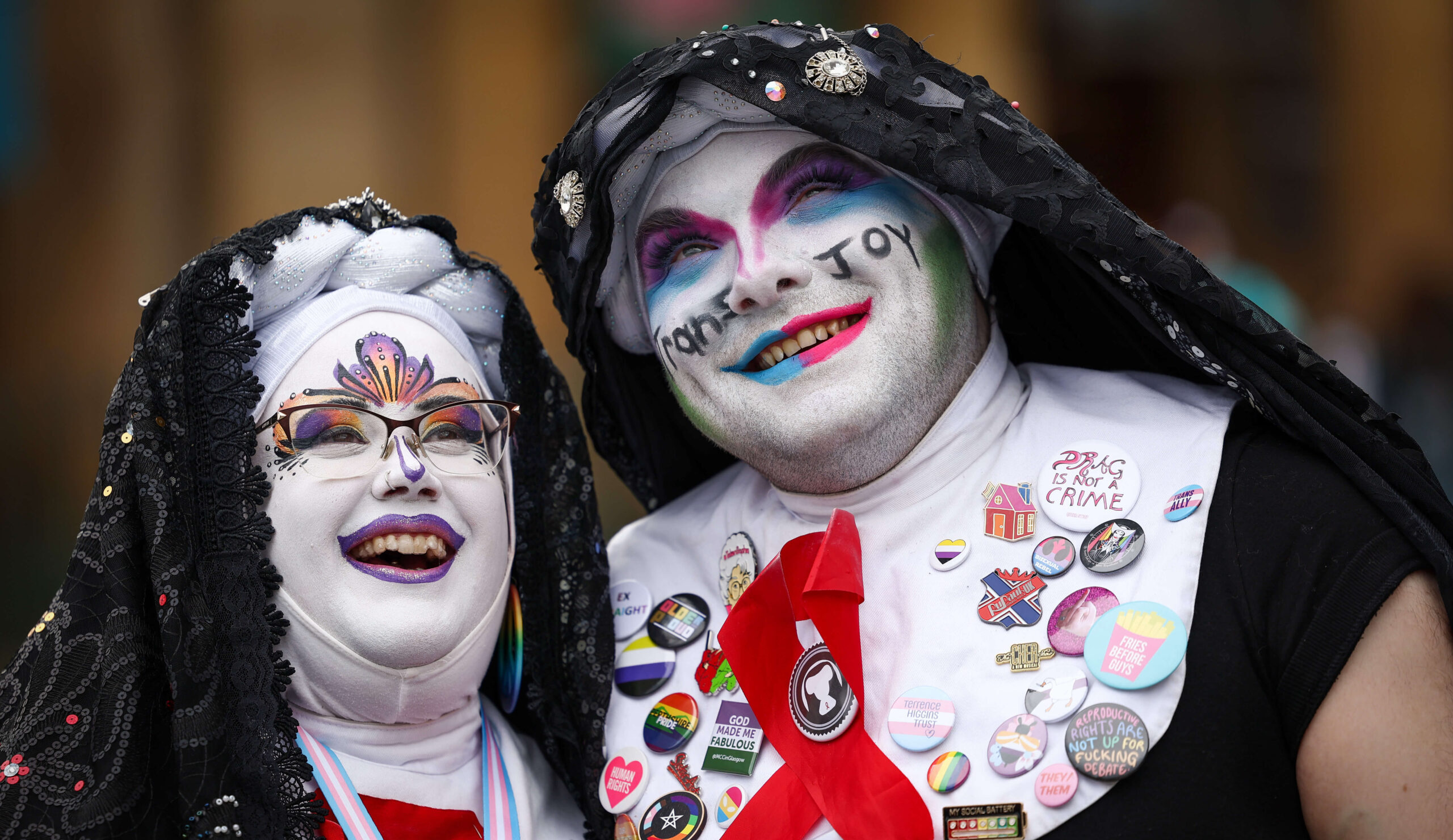The Fortunes of Poetry in an Age of Unmaking
By James Matthew Wilson
(Wiseblood Books, 2015)
Marianne Moore begins her epigram “Poetry” by sniffing, “I, too, dislike it,” but concludes by conceding that it provides, “after all, a place for the genuine.” That was eighty years ago. James Matthew Wilson wonders whether the narcissistic posturing of many contemporary poets—especially of the academic species—has not reduced poetry from an object of dislike to a state of utter insignificance, like debates over bimetallism. In The Fortunes of Poetry in an Age of Unmaking, he avers that the prospects of poetry are indeed dire, but that much of the problem arises from an ignorance of what poetry actually is, not only among its potential readers, but, more tellingly, among its prominent practitioners.
Since a lack of awareness and understanding can be rectified, there is reason enough for hope that the place of poetry may be restored and, with it, our culture revived and illuminated; for Wilson is moving toward the conclusion that “Poetry is the paradigmatic art form” (211–13). Along the way he provides a readable and witty critical history of literary theory and poetic fashion over most of the past one hundred years. That is part 1, “Time Reverses.” In the second half of the book, “Notes Toward a Definition of Poetry,” he takes up the difficulties of defining poetry and, finally, offers his own account of what this art actually is.
An example of what Wilson is up to in part 1 comes in the arrestingly entitled chapter 2: “Criticism, Inc. Imagined as a French Holding Company.” The principal focus here is on what used to be called the New Criticism, which emphasized the close attention to the style and structure of individual works of literature in order to explicate their significance and determine their value. Wilson is quick to refute, however, the standard canard of both old historicists and assorted postmodernists that the New Criticism was no more than narrow formalism:
Now, I should note that the usual dismissals of the New Critics on account of their “religious” obsession with metaphor and paradox, their obscurantist hunting after the “heresy of paraphrase,” or because their apparent formalism closed off literature to the deeper exigencies that explain why we read it and why some of us write it, are mistaken. As their Arnoldian pedigree suggests, few authors have ever so persistently insisted on the importance of poetry as a mode of discovery and critique in religious, political, and other cultural fields as did Ransom, Tate, Brooks, and, especially, Yvor Winters. (29)
The fault he imputes to the New Critics is a lack of philosophical sophistication sufficient to establish their account of poetry on a firm theoretical foundation.
Nevertheless, the contrast with the postmodernists, who not so much succeeded to as expropriated academic literary study, is, on Wilson’s reading, wholly favorable to the older school. Hence the humorous chapter title: “Criticism, Inc.” (the title of a John Crowe Ransom essay) suffered a hostile takeover at the hands of a consortium of French deconstructionists, who instituted massive layoffs and offered a wholly different, thoroughly debased product. Indeed, such was their intention: “Continental literary theory seemed to debunk the figurative grandeur of literature,” and so “literary theory promised to wrest the importance and prestige of art from the author and put it in the hands of the scholar. Unfortunately for the scholar, grandeur is not fungible” (31). In capturing academic literary study, the postmodernists have turned their prize into something that no longer interests anyone else.
The result is the topic of a ruefully amusing third chapter, “The Half-Empty Auditorium,” in which Wilson describes the experience of attending a poetry reading on a university campus, in which a creative writing teacher, perhaps a poet in residence, performs before a sparse audience of other creative writing teachers and a posse of MFA students:
There they sit, the piercèd ones, the assembled mass of a generation of well-published, would-be poets who simply do not know what they are doing, crowded by their sycophants, even now conceiving non sequiturs in lines, waiting to hear something they may steal, waiting to hear the next new thing. In their quest to be original, inventive, “experimental,” and above all, published, they have repeated and repeated the mistakes of their slightly elder elders and their illiterate classmates in myriad MFA workshops. (45)
Does this seem harsh? Here are some lines Wilson quotes from exactly the kind of poem (this one is by Wayne Koestenbaum) that (as I can attest) is likely to be heard at such a reading:
I might benefit from supplemental testosterone.
My arm is missing a wedge.My girlfriend had a much-touted abortion.
I’m not emotionally expressive.Adorno: “He who offers for sale
something unique that no one wants to buyrepresents, even against his will, freedom from exchange.” (46)
I too dislike it.
In the remaining chapters of the first part of The Fortunes of Poetry, Wilson, who may be described as a second-generation “New Formalist,” considers the extent to which the New Formalist movement and other tradition-minded poets have succeeded over the past forty years or so in restoring to poetry something of its energy and eminence. Wilson maintains that much of the original problem resulted from overstating the notion that form and content must be a perfect synthesis: “A work of art is a unity, certainly, but what is one in being may be diverse in reason, and the best reasoning we have acknowledges that a work of art can adequately be understood if we recognize form and content as distinguishable” (56). By concentrating on form per se, he argues, the New Formalists also provided a means for reinvigorating content.
Wordsworth provides an example from an earlier age: His apparent formal innovations served as a panacea for the further cultivation of conventions of subject matter. The former never served as a panacea for the failure of the latter, but rather they formed a virtuous circle, where changed diction made possible the representation of new subjects, and new subjects occasioned the development of new linguistic and prosodic practices. (58)
For a poet who has a story to tell, a scene to dramatize, an experience to embody—the formal elements of meter and rhyme not only furnish a verbal shape but also enhance the meaning, even as a countenance, the tone and timbre of a voice, and the gesture of a hand give significance to a man’s words.
Wilson offers a powerful contemporary example in his explication of Dana Gioia’s “Cruising with the Beach Boys” by way of defending it from a dismissive critique by Thomas B. Byers, who complains that, except for its meter, the poem is not really distinguishable from “hundreds of skillful but generic—and totally self-involved—workshop lyrics” (82). What Gioia’s lyric offers is the brooding meditation of a man, “Travelling on business in a rented car,” who hears again a song from his youth for the first time in years, “Probably not since it last left the charts / Back in L.A. in 1969.” As Wilson points out, Gioia very deftly navigates the choppy social waters that both separate and link high and popular culture during a time when we talk about a music industry and a cinema industry. Since even making the distinction between refined and popular art is nowadays considered regressive and elitist, Gioia’s poem is decisively superior to the typical “workshop lyric” by virtue of its subtle acknowledgment both of the sentimentality of popular clichés and of their power; that is, by virtue of its greater cultural awareness and sophistication.
The speaker of the poem recalls his divided—hypocritical—adolescent self:
Every lovesick summer has its song,
And this one I pretended to despise,
But if I was alone when it came on,
I turned it up full-blast to sing along—
What he realizes in hearing the song again is that he has not purged the obscure turbid emotions that undermined his youthful affected disdain for pop music. “I thought by now I’d left those nights behind,” he muses,
But one old song, a stretch of empty road,
Can open up a door and let them fall
Tumbling like boxes from a dusty shelf,
Tightening my throat for no reason at all Bringing on tears shed only for myself.
It turns out that the man is not so different from the boy who was “The Cecil B. DeMille of my self-pity.”
It is not apparent to me, however, that Wilson provides an altogether satisfactory answer to Byers’s complaint that Gioia’s poem is just a workshop lyric plus meter. “If one enjoys reading poetry,” Wilson says, “versification becomes its own reward—not separate in meaning from the poem, but so central to the poem that it can become an independent matter of exploration,” and he proceeds to suggest “that Gioia’s poem becomes interesting on account of its craft, even though its subject matter may initially appear tired” (94). Wilson also effectively quotes Sir Philip Sidney on the inherent gravity and orderliness of verse. But these observations do not explain how the meter enhances the meaning, how they are, in fact, not “separate.”
While a review is no place for an exhaustive account, perhaps a few suggestions may be offered. “Cruising with the Beach Boys” comprises four eight-line stanzas in blank verse with rhymes but no set rhyme scheme. One long and widely recognized purpose of such formal elements is mnemonic: a metrical, rhyming poem is easier to remember than a patch of prose. A Beach Boys song has both rhyme and meter reinforced by the pounding rhythm of the song, features that doubtless contribute to the speaker’s amazed realization: “I can’t believe I know the words by heart.”
Gioia does something more specific and telling with the formal elements, however: although the poem as a whole has no fixed rhyme scheme, each of the last three eight-line stanzas closes with an abab quatrain, as in the passage quoted above, with rhymes on “fall” / “shelf” / “all”/ “myself.” This device of finishing up a stretch of randomly rhyming verse with a tight pattern recalls Milton’s Lycidas, which finishes with a perfect ottava rima stanza at the end of more than 180 lines of iambic pentameter with interspersed trimeter lines and sporadic rhymes. This is not to say that Gioia was thinking of Milton, or that most readers would notice; but in each case the technique of increasing formal orderliness implies a growth of clarity in the mind of the meditative speaker.
The goal of part 2, “Notes Toward a Definition of Poetry” (I suppose the echo of Wallace Stevens’s title, “Notes Toward a Supreme Fiction,” is deliberate), is explicit:
Equipped with the account of reason we find in Aristotle, I shall undertake a brief examination of the literary theories of Henri Brémond, W. K. Wimsatt, Jacques Maritain, John Hollander, and J. V. Cunningham, all of which will set the stage for my own historical account of what poetry is. This I will conduct in two ways. First, in a series of four short studies that subject contemporary poetic practices to scrutiny to see what of it can survive. Second, in the last chapter, I will conclude with a (relatively) comprehensive account of poetry in its material elements, fullness of purpose, and social, intellectual, and aesthetic functions. (120)
Wilson is sympathetic to some degree with all the theorists he lists—Wimsatt and Maritain are treated with particular respect—and so his handling of these figures lays some of the groundwork for his own theory of poetry. Nevertheless, its actual exposition occupies only chapter 12, “The Part the Muses Give Us,” fewer than 50 pages of 253 pages of text (not counting a very useful 30-page appendix on metrics). You will not be surprised, and it is no devastating criticism, that Wilson has not resolved all our questions about the nature and purpose of poetry.
The most thorough and persuasive account of poetry remains Aristotle’s Poetics, composed well over two thousand years ago. There has been no development in literary theory during the past four centuries comparable to the displacement of Aristotelian physics. Although numerous critics have challenged Aristotle, and although the literary landscape has shifted during the same period in ways almost as startling as what is revealed by our new awareness of physical realities, discussions of literature still begin with Aristotle, and nothing has taken the place of the Poetics.
The problem is in part indicated by the equivocation that I have perpetrated in the preceding paragraph: Are we discussing poetry or literature, or are they the same thing? Or is poetry a species of the genus literature, and is verse part of the definition of poetry? For Plato and Aristotle, who jointly constitute the fons et origo of poetic criticism in the Western world, the term poetry meant what today we should call literature (or, more precisely, imaginative literature, to distinguish it from, say, “a search of the literature on climate change”); and its defining characteristic was mimesis—the imitation or representation of reality, the creation of a fiction. Aristotle explicitly denies that verse is an essential element of poetry (and Sir Philip Sidney agrees nearly two millennia later) and points out the Herodotus’s History rewritten in verse would still be history rather than poetry.
Wilson suggests that the stories in Herodotus might easily have made poems and points out that “Those who read Lucretius’s On the Nature of Things, read it first and foremost as a poem” (250) by way of insisting that “meter is central to the understanding of the art of poetry in ancient and medieval and also in the modern views” (229). We may, however, inquire: Would Aristotle’s Poetics be a poem if rewritten in verse? And does anyone read Erasmus Darwin’s The Botanic Garden (1791), written in heroic couplets, “first and foremost as a poem”? Further, Wilson also rejects J. V. Cunningham’s simple identification of poetry with metrical composition (155–56), treats Maritain’s “tepid” attitude toward the novel as a flaw (145), and seems to allow that prose poems are, in fact, poems (171–77).
To observe that James Matthew Wilson has not solved these problems is very mild criticism: no one has. The Fortunes of Poetry in an Age of Unmaking is a book rich in insight and provocative questions and challenges. It frames the argument about poetry (literature?) exceedingly well: the author is learned in both traditional literature and philosophy, and wonderfully acquainted with developments in the poetry and criticism of our contemporaries. More important, he is an astute thinker and a gifted poet himself. I wish the book had been more carefully proofread (e.g., the fine historian of English meter John Thompson is turned into James Thompson, and his book The Founding of English Meter, 1961, is omitted from the “Notes” to the appendix), and an index certainly ought to have been included. Notwithstanding these minor flaws, Wilson has provided a marvelous commentary on the place of poetry in our time. ♦
R. V. Young is professor emeritus of English at North Carolina State University and former editor of Modern Age and the John Donne Journal.














